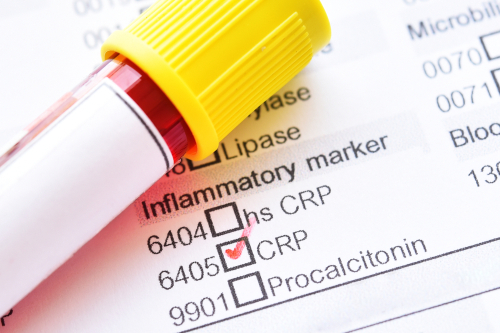Blood Elevated ESR and CRP Value in rheumatology practice: A differential diagnosis
Prof.Dr.Dram,profdrram@gmail.com,Gastro Intestinal,Liver Hiv,Hepatitis and sex diseases expert 7838059592,943414355 www.blogspot.com/drnakipuria www.bhartiyanews24x7.com www.bhartiyanews24x7.net www.Bharatiyanews24x7.com
ESR and CRP, two widely used inflammatory markers, can be elevated in non-rheumatologic diseases such as infections and malignancies too, making it confusing to arrive at a diagnosis in patients with nonspecific clinical presentations.
ESR and CRP, two acute phase reactants, are among the most widely used inflammatory markers for the detection and follow-up of disease activity in current rheumatology practice. But, non-rheumatologic diseases such as infections and malignancies can also have similarly elevated acute phase reactants and can therefore be confused with the nonspecific clinical findings of rheumatic diseases (RDs).
It is very common to get false negative and false positive results on measuring the erythrocyte sedimentation rate. Most of the conditions that cannot absolutely guarantee systemic inflammation such as malignancy, can result in patients having a high erythrocyte sedimentation rate and normal C-reactive protein.
C-Reactive Protein in the acute phase reaction
C-reactive protein has emerged as a better marker of the acute phase reaction than the erythrocyte sedimentation rate. In the acute phase reaction, C-reactive protein being a more sensitive test, detects changes rapidly. Tissue damage due to myocardial infarction or in venous thromboembolism results in patients with a raised C-reactive protein whereas a normal erythrocyte sedimentation rate is seen in patients who frequently have infections.
 Therefore, a suspicion for diagnosing non-rheumatic diseases such as infection and malignancy can be considered when extraordinarily high levels of serum CRP are seen in a patient with non-specific clinical findings even in the presence of a previously diagnosed RD. To diagnose malignancy, advanced radiological investigations may be required in these cases.
Therefore, a suspicion for diagnosing non-rheumatic diseases such as infection and malignancy can be considered when extraordinarily high levels of serum CRP are seen in a patient with non-specific clinical findings even in the presence of a previously diagnosed RD. To diagnose malignancy, advanced radiological investigations may be required in these cases.
A retrospective study published in the European Journal of Rheumatology probed the differential diagnosis for patients presenting with sustained, high levels of ESR and CRP.The patients were divided into two groups,47 out of 112 patients had a history of RD,65 of the patients did not have any previous RD
In the first group (47 patients with previously diagnosed RD), the most common cause for flares was the underlying disease. Rheumatoid arthritis made up of 66% of all flares.
The most common etiology for nonspecific elevations in ESR/CRP levels in those 65 patients was new onset RD (52.3%) and the most common new RD was Polymyalgia rheumatica (PMR), followed by seronegative rheumatoid arthritis.
24.6% and 9.2% were the incidences of infections and malignancies respectively. In case of infections, CRP levels were considerably higher when compared to new onset RD or malignancies (p<0.05).
These differences occur since the increase in the C-reactive protein occurs before the sedimentation rate rises, and also because the sedimentation rate does not change with minor inflammation. Therefore, there should be judicious use of C-reactive protein and it should be used only for the diagnosis and monitoring of a patient who appears to have an inflammatory process and not used as a screening test for wellness.
There was an age-related rise in ESR after the age of 40 years with a gradual increase, mainly after 60 years of age as per a study done by Osei-Bimpong A and Meek JH et al. Age also affects CRP but to a much lesser extent. As a screening test, ESR and CRP appear to be equally helpful and consistent. Their relative convenience and cost must be considered in deciding which test should be carried out. Both the ESR and CRP tests should be done for managing patients with specific diseases.
- Kidney stones universally present hazard in north india,dillution by water prevent it
- Steroid and placebo effect equally for mild persisting asthma with low sputum eosinophils
- Government wants to fix public healthcare staff shortages with ayush docs: will it work?
- Plea in hc for payment of salaries of edmc, north mcd teachers and doctors
- 7 indian pharma companies named in us lawsuit over inflating generic drug prices
- Woman in up dies after explosion in her mouth during treatment,what is diagnosis?
- Woman in up dies after explosion in her mouth during treatment,what is diagnosis?
- Woman in up dies after explosion in her mouth during treatment,what is diagnosis?
- Air pollution ! mothers organising rally in london,anaesthetist choosing gas,will india follow?
- Cardiac arrest is always not sudden as understood -a study

 Comments (
Comments ( Category (
Category ( Views (
Views (